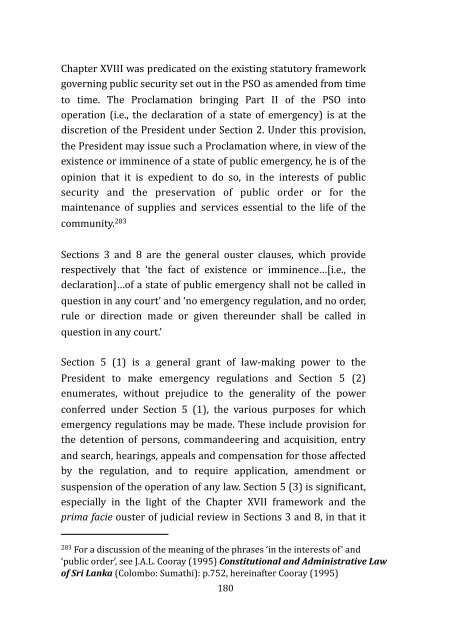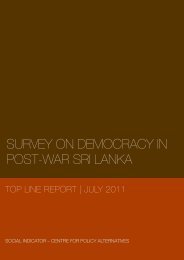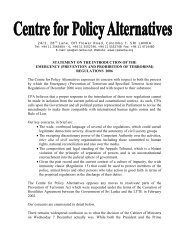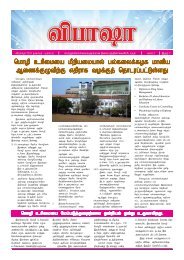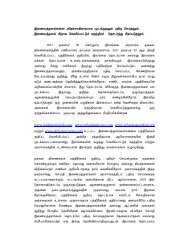States of Emergency - Centre for Policy Alternatives
States of Emergency - Centre for Policy Alternatives
States of Emergency - Centre for Policy Alternatives
You also want an ePaper? Increase the reach of your titles
YUMPU automatically turns print PDFs into web optimized ePapers that Google loves.
Chapter XVIII was predicated on the existing statutory framework<br />
governing public security set out in the PSO as amended from time<br />
to time. The Proclamation bringing Part II <strong>of</strong> the PSO into<br />
operation (i.e., the declaration <strong>of</strong> a state <strong>of</strong> emergency) is at the<br />
discretion <strong>of</strong> the President under Section 2. Under this provision,<br />
the President may issue such a Proclamation where, in view <strong>of</strong> the<br />
existence or imminence <strong>of</strong> a state <strong>of</strong> public emergency, he is <strong>of</strong> the<br />
opinion that it is expedient to do so, in the interests <strong>of</strong> public<br />
security and the preservation <strong>of</strong> public order or <strong>for</strong> the<br />
maintenance <strong>of</strong> supplies and services essential to the life <strong>of</strong> the<br />
community. 283<br />
Sections 3 and 8 are the general ouster clauses, which provide<br />
respectively that ‘the fact <strong>of</strong> existence or imminence…[i.e., the<br />
declaration]…<strong>of</strong> a state <strong>of</strong> public emergency shall not be called in<br />
question in any court’ and ‘no emergency regulation, and no order,<br />
rule or direction made or given thereunder shall be called in<br />
question in any court.’<br />
Section 5 (1) is a general grant <strong>of</strong> law‐making power to the<br />
President to make emergency regulations and Section 5 (2)<br />
enumerates, without prejudice to the generality <strong>of</strong> the power<br />
conferred under Section 5 (1), the various purposes <strong>for</strong> which<br />
emergency regulations may be made. These include provision <strong>for</strong><br />
the detention <strong>of</strong> persons, commandeering and acquisition, entry<br />
and search, hearings, appeals and compensation <strong>for</strong> those affected<br />
by the regulation, and to require application, amendment or<br />
suspension <strong>of</strong> the operation <strong>of</strong> any law. Section 5 (3) is signiLicant,<br />
especially in the light <strong>of</strong> the Chapter XVII framework and the<br />
prima facie ouster <strong>of</strong> judicial review in Sections 3 and 8, in that it<br />
283<br />
For a discussion <strong>of</strong> the meaning <strong>of</strong> the phrases ‘in the interests <strong>of</strong>’ and<br />
‘public order’, see J.A.L. Cooray (1995) Constitutional and Administrative Law <br />
<strong>of</strong> Sri Lanka (Colombo: Sumathi): p.752, hereinafter Cooray (1995)<br />
180


